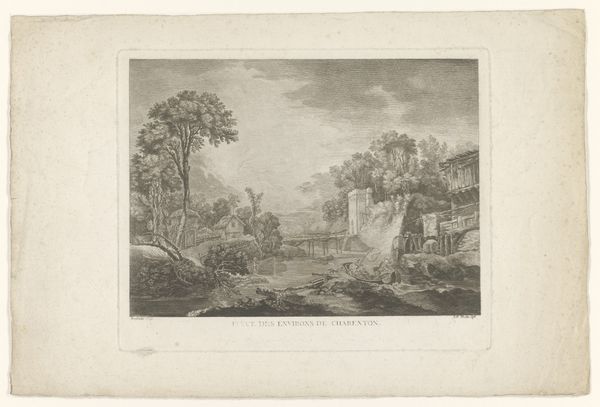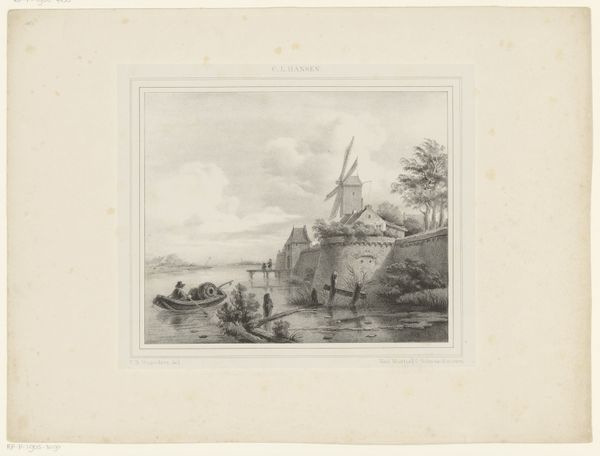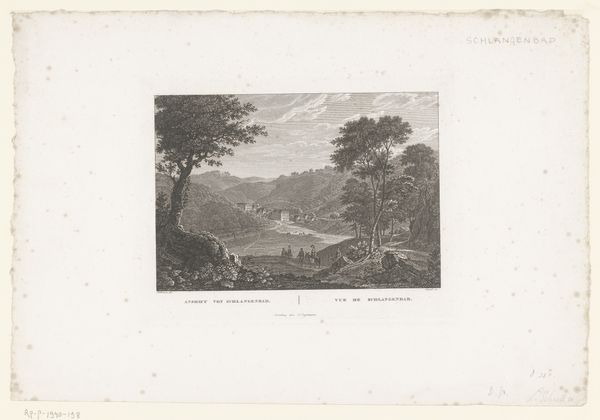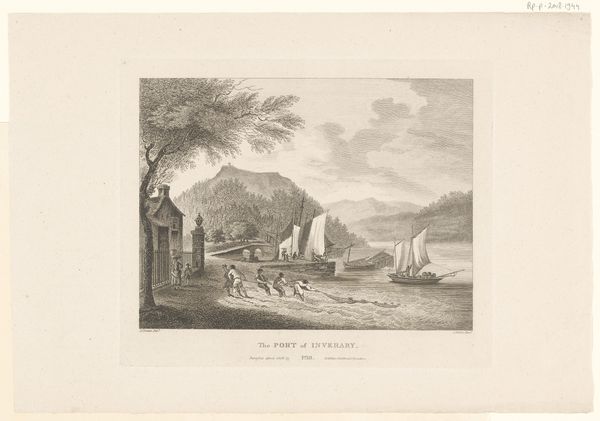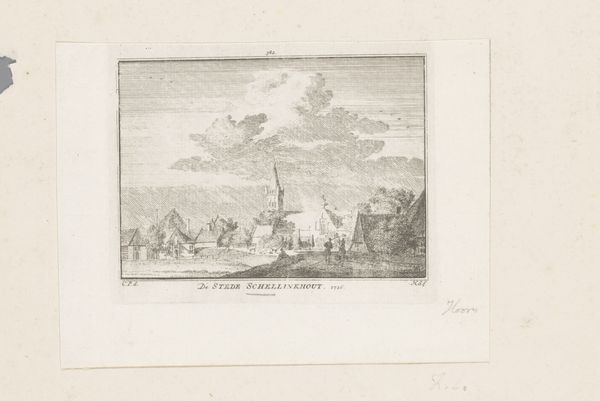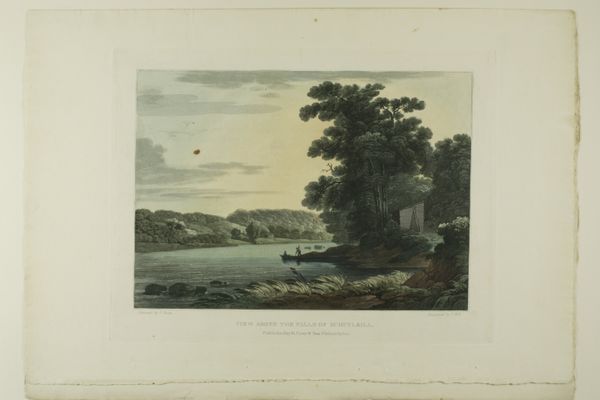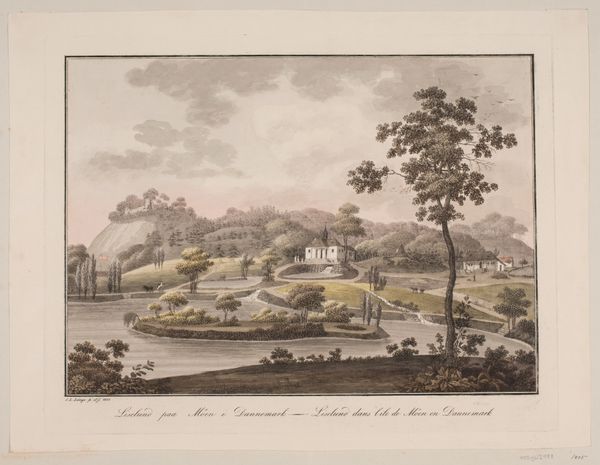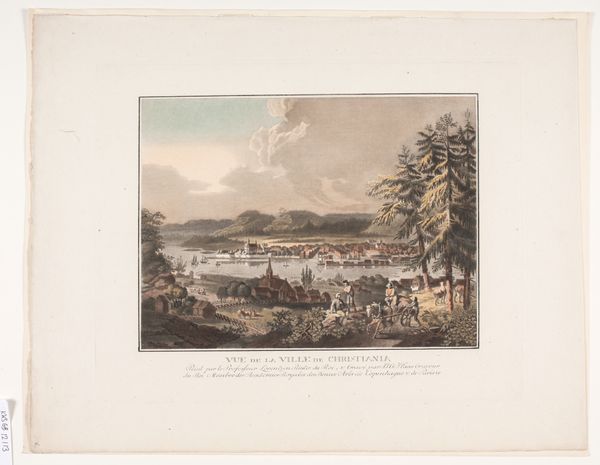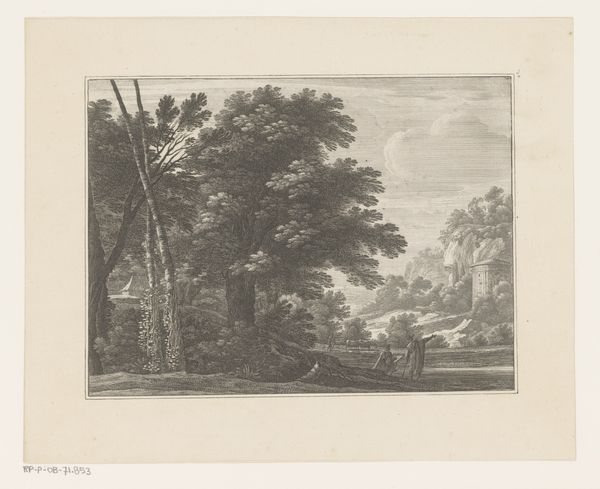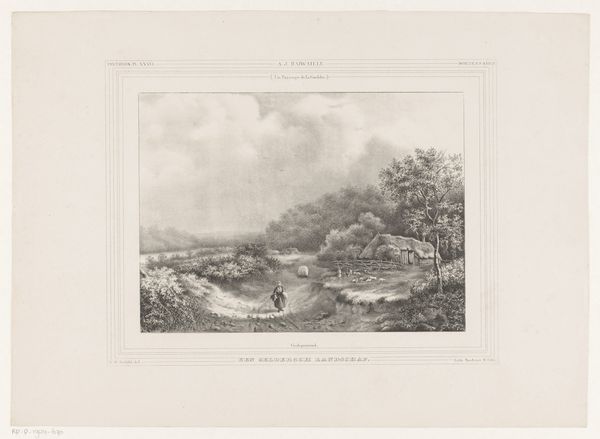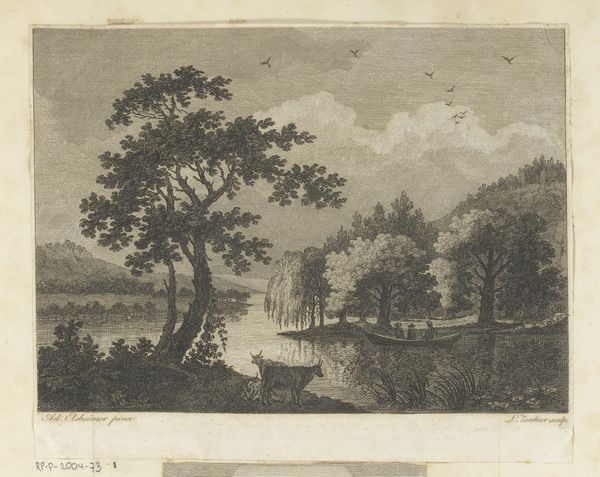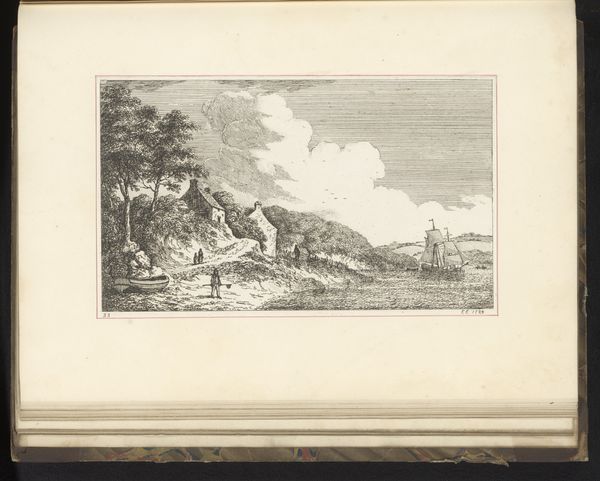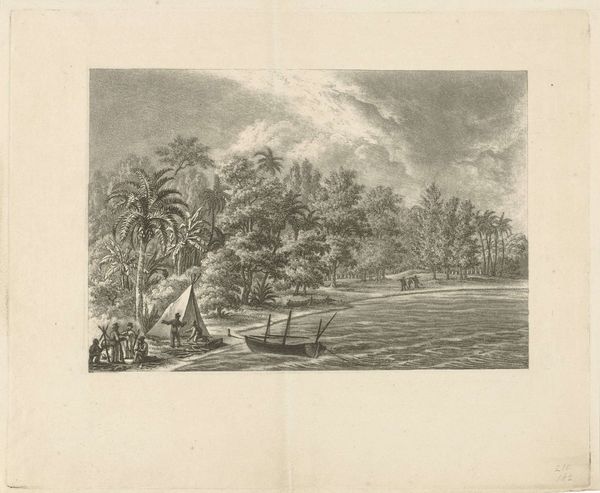
print, engraving
# print
#
old engraving style
#
landscape
#
river
#
personal sketchbook
#
romanticism
#
orientalism
#
engraving
Dimensions: height 342 mm, width 474 mm
Copyright: Rijks Museum: Open Domain
Curator: Before us hangs "View of a River of Goa, near Makassar," an engraving by Quirijn Maurits Rudolf Ver Huell, dating from 1824. Editor: The light in this piece is captivating! The misty quality of the background really creates a sense of distance and scale. But tell me more about the making of the print itself. Curator: Certainly. Consider how engravings, as repeatable images, spread ideas of empire. They are visual technologies but also carriers of culture and ideology. We might ponder what Goa—or the concept of Goa, and by extension the East—represented to its original European audience through images like this. Editor: Absolutely. Looking closely, one can appreciate the labor invested in each line, each etched detail. But also, this piece feels… conflicted. Romanticized nature, yes, but human figures reduced to repetitive forms. And pulling boats along by rope looks hard. Curator: Think about it through the lens of Orientalism and Romanticism. The image captures both the allure of the exotic East, but also its potential to be mastered and used. The very act of depiction is loaded. Editor: But it's also, visually, beautiful. Those palm trees, and that dramatic sky – it suggests adventure, the exotic, the unknown... all rendered accessible through careful work. The people and their vessels contrast sharply. Are those vessels, in the context of material study, evidence of global exchange or imperial plunder? Curator: Perhaps, a bit of both? How do symbols of cultural contact operate as triggers in our present day. Ver Huell is not simply presenting a scene; he's curating a specific interpretation, influencing the European view of the East, whether consciously or not. Editor: The material legacy then goes beyond the ink and paper. It becomes a visual artifact within complex systems of production and consumption. What are we consuming as we examine it now? Whose perspective dominates? Curator: Indeed, its enduring power resides in its ability to stir up all these thoughts about seeing, knowing, and possessing distant lands. Editor: And remind us of the labor that is hidden behind what looks picturesque, prompting reflection on who gains and who loses in this visual economy.
Comments
No comments
Be the first to comment and join the conversation on the ultimate creative platform.

